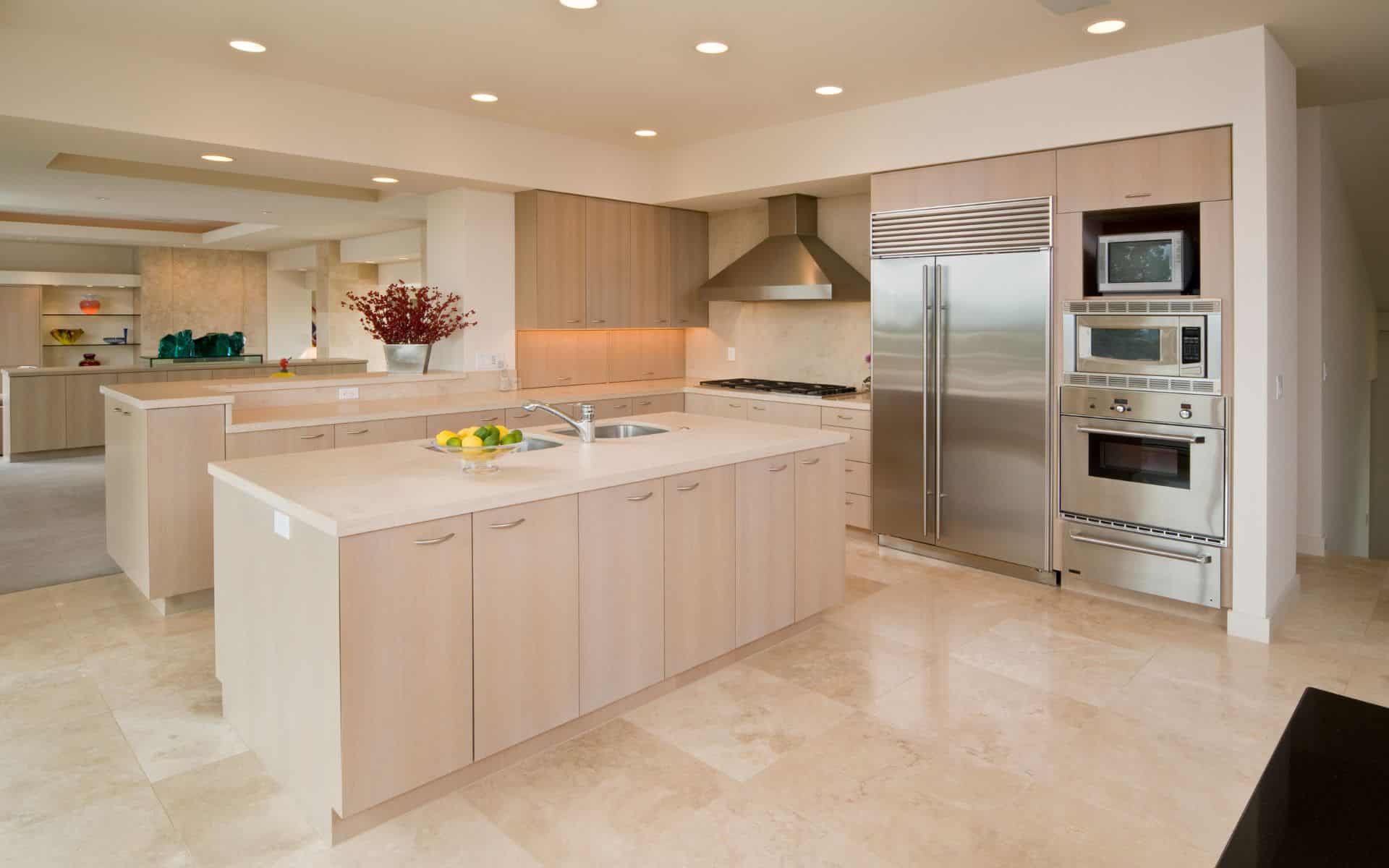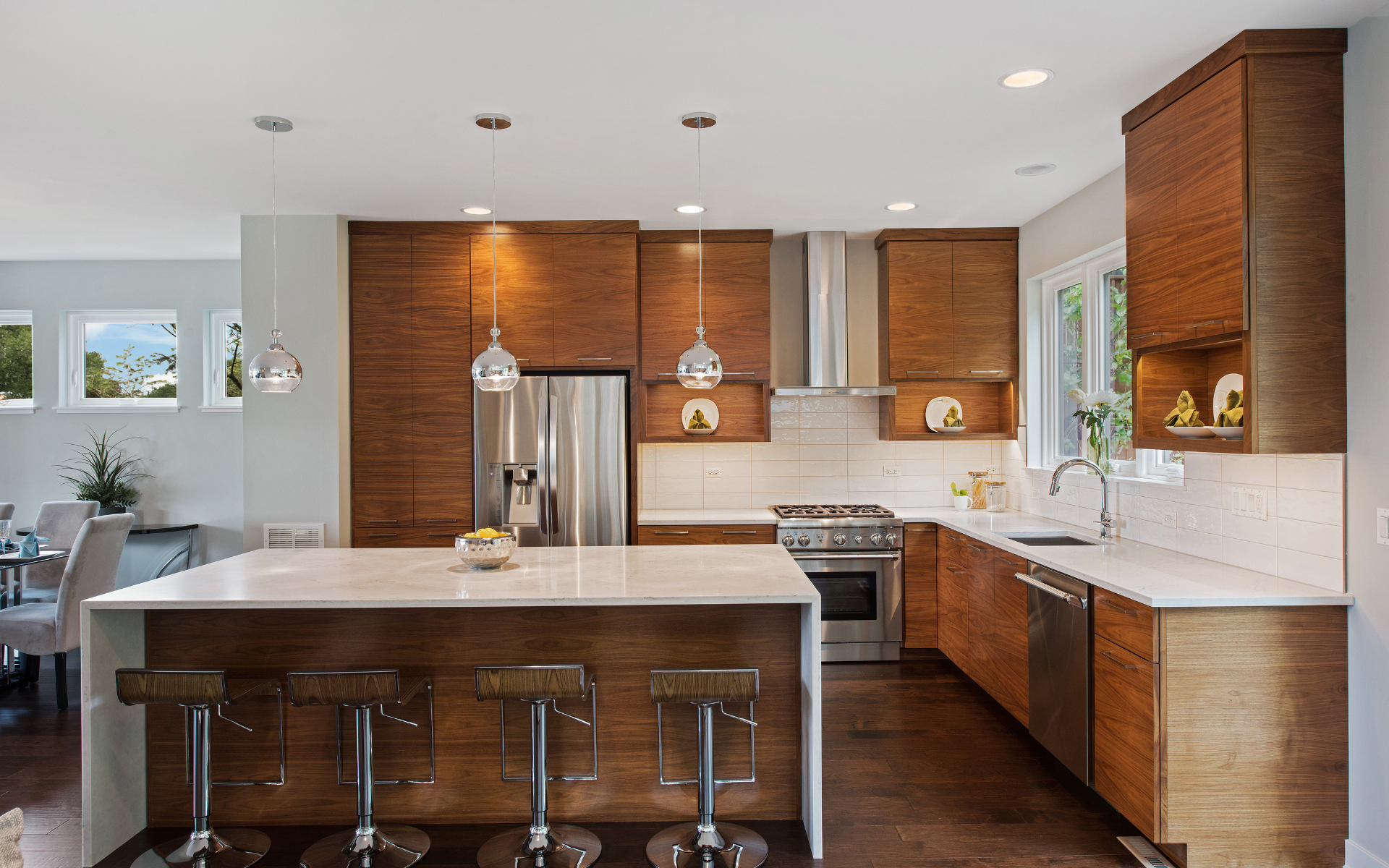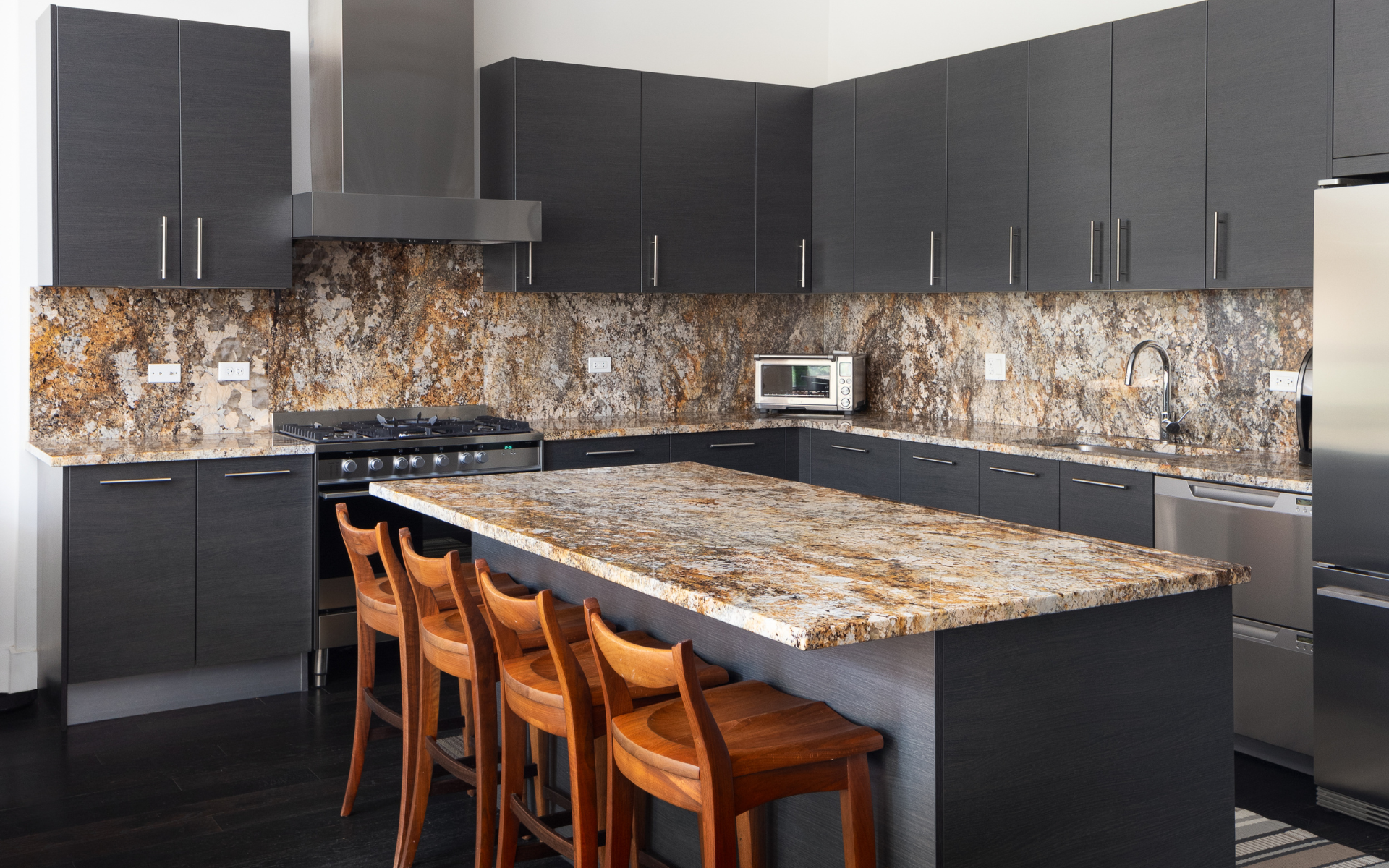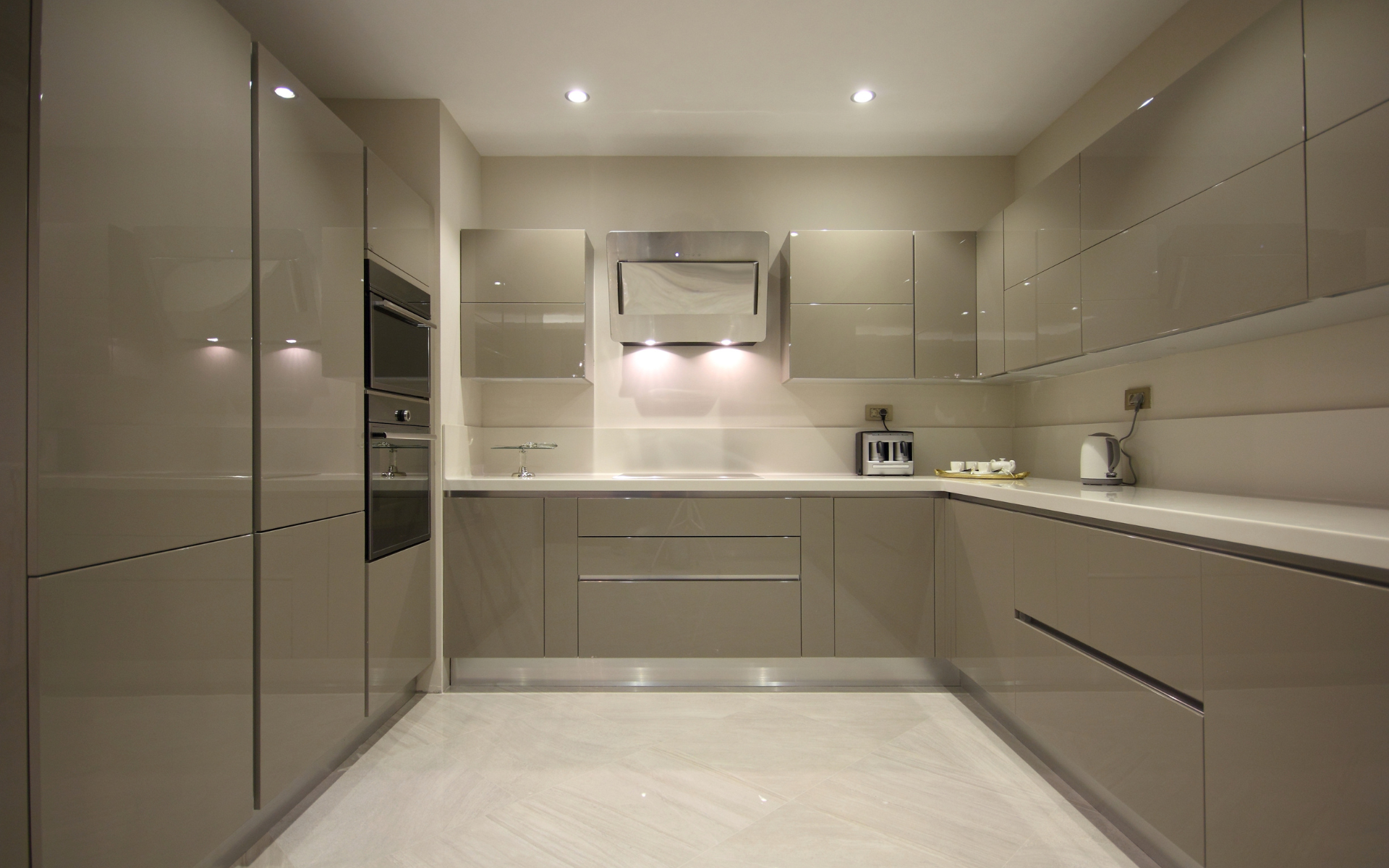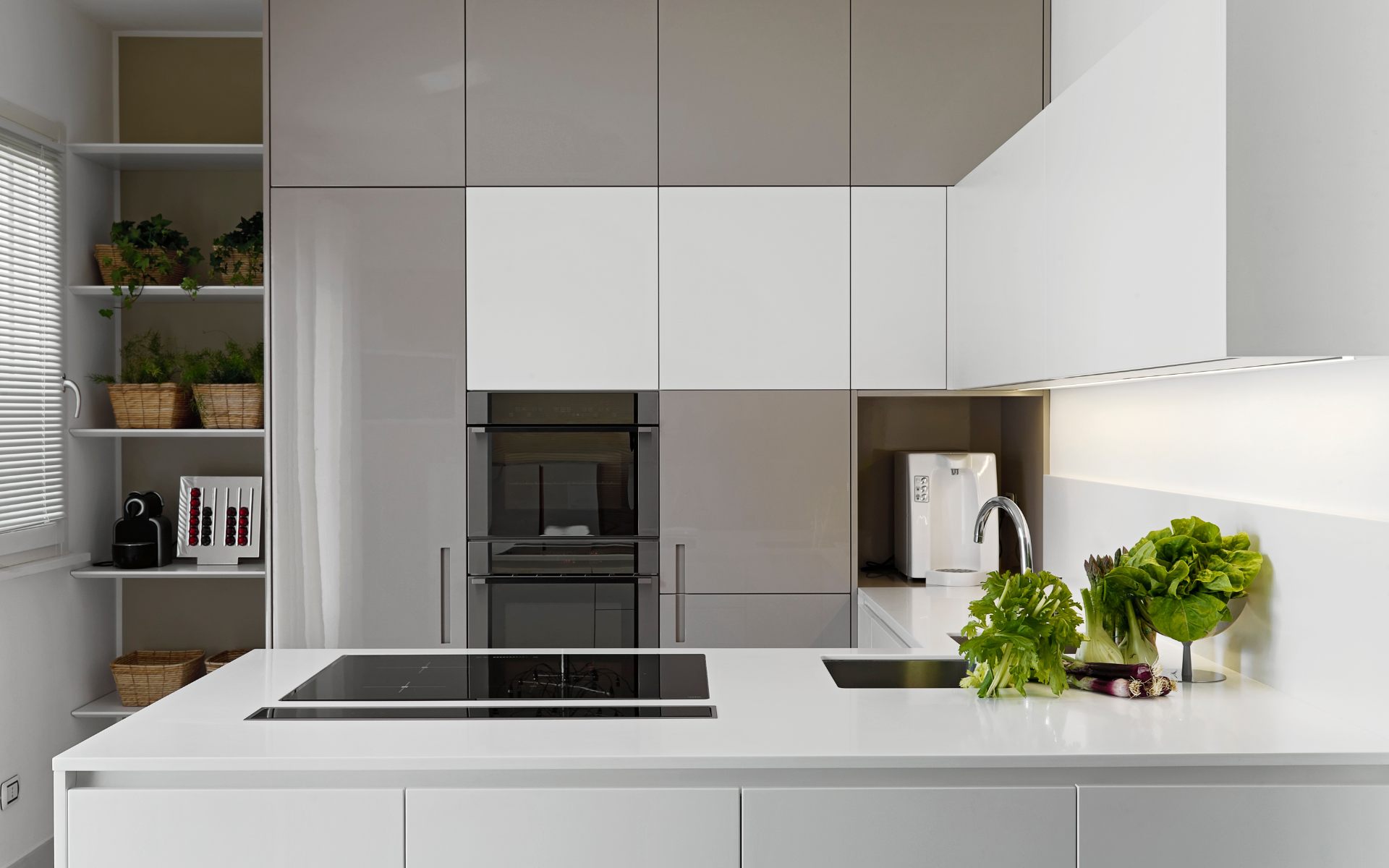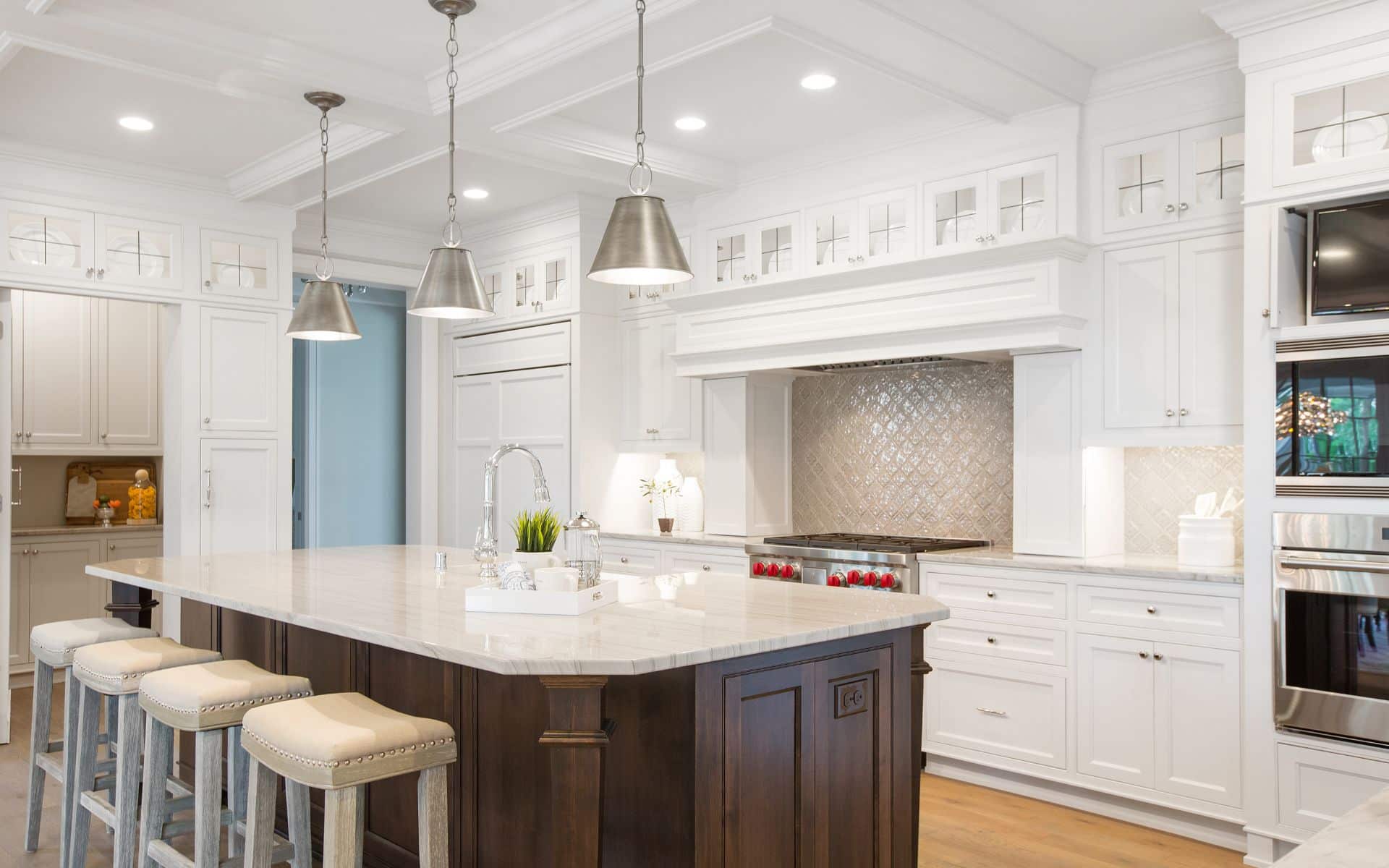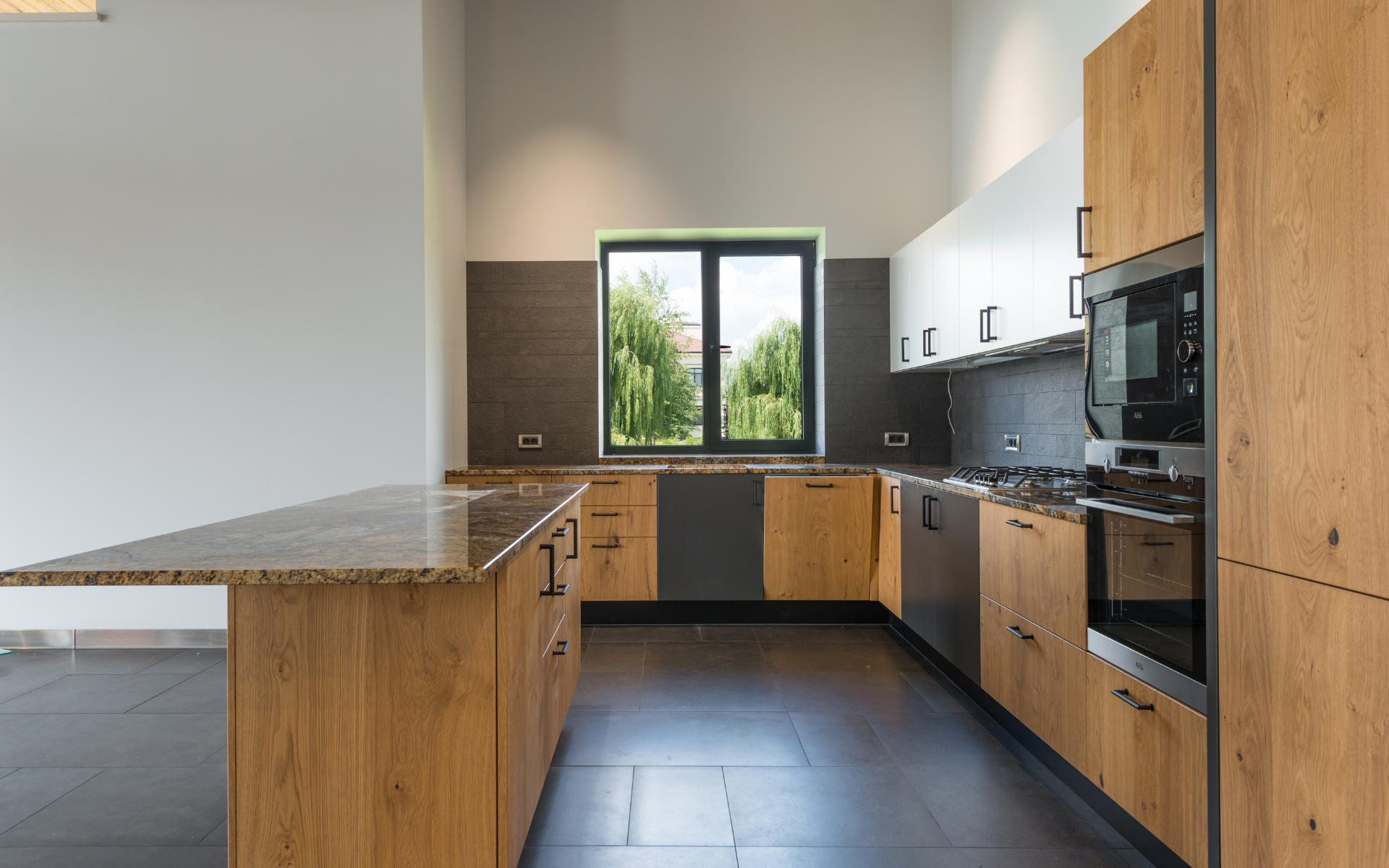When remodeling your kitchen and bath, one of the biggest decisions is the cabinet finish. The right finish transforms basic boxes into a stunning focal point. From understated natural wood to sleek lacquer in bold hues, cabinet finishes create style, durability, and visual interest.
This guide will walk through popular options to choose the finish that suits your home and lifestyle. Let’s explore how different materials, stains, and paint impact the look and function of various finishes of kitchen cabinets.
Natural Wood Cabinets
Wood cabinets offer a timeless, traditional look showcasing the wood’s natural grain and color. The finish protects the wood while allowing its organic beauty to shine.
Unfinished Wood
Raw, unfinished wood allows you a durable option to apply your stain or paint. Oak, maple, and ash are common unfinished cabinet woods. Without a finish, wood is prone to damage.
Stained Wood
Stain is absorbed into the wood’s color, to accentuate the grain while adding color. Common stains include:
Light brown – Enhances natural oak, maple, or birch.
Dark walnut – For a rich, dramatic look on oak or cherry.
Reddish tones – Warm up oak and mahogany.
Gray shades – Weathered, coastal vibe for oak and maple.
Consider stained samples on your exact wood to pick the ideal tone. Combining different stains on cabinets and islands can look striking.
Lacquered Wood
Lacquer is a clear coating applied over a stain or unfinished wood. It protects the wood while allowing the grain to show through. Common sheens include:
Matte – Subtle glow with wood texture
Satin – Soft luster
Semi-gloss – Medium shine
Gloss – Reflective, smooth finish
Teak Oil
Teak oil enhances wood grain with a low-sheen, golden tone. Eco-friendly oils like tung and linseed are also used. Multiple coats create a water-resistant patina.
Wax
Protects wood with a low-luster, soft look. Wax finishes are easily renewable but require more maintenance than other finishes. Beeswax and carnauba are popular.
Natural wood never goes out of style. Consider your lifestyle when picking the right finish.
Painted Kitchen Cabinets
Painted cabinetry for a kitchen remodel provides limitless color options from airy whites to bold, vibrant hues. The paint finish and possibilities are endless.
Base Coat Primers
Primers designed for cabinet refinishing provide maximum adhesion and hide wood grain before painting:
White pigmented shellac primer – Shellac-based primers work with nearly any cabinet material from wood to laminate to melamine. The white pigment provides stain blocking and allows the true paint color to show through. Shellac dries extremely fast, letting you apply topcoats quickly. Zinsser Bulls Eye 1-2-3 is a leading shellac primer option.
High-bond latex primers – Water-based latex primers designed for painting cabinets and furniture provide excellent adhesion on smooth surfaces including laminate and thermofoil. Latex bonding primers contain additives for extra grip compared to standard primers. They tend to have minimal odor and take 30-60 minutes to dry. Some popular options include Benjamin Moore Fresh Start and Sherwin-Williams Extreme Bond.
Oil-based primers – For painting previously finished cabinets, oil-based primers excel at blocking stains, tannins, and knots so they don’t bleed into the new paint. Oil-based primers require mineral spirits for cleanup and have stronger fumes than other options. Good choices like INSL-X Prime Lock or Kilz Original take around 6 hours to dry fully.
Wood conditioners – Specialty water- or solvent-based products seal wooden cabinets to prevent blotchiness and uneven absorption when staining or painting. Conditioners equalize porosity and texture. Pre-treating oak, pine, and other woods with conditioners creates better adhesion and truer color results. Brands like Minwax Wood Conditioner or Benite Wood Conditioner get applied before primer.
Topcoat Paints
Cabinet paints withstand cleaning and wear better than standard wall paints. Sheens to consider:
Matte – Velvety, subtle finish absorbs light
Satin – Soft glow with a smooth texture
Semi-gloss – Light sheen resists moisture and stains
Gloss – Reflective, shiny, durable finish
Satin or semi-gloss are ideal for durability in high-traffic spots like lower cabinets.
Glazing Techniques
Glazes add dimension to painted cabinets:
Wiping stain – Accentuates details and edges when wiped post-painting.
Gel stain – Translucent tone when applied before topcoat.
Painted glaze – Pigmented antiquing effect.
Distressing
Distressing reveals some wood beneath the paint for a worn, cottage look. Common techniques include:
Sanding – Removes paint to expose wood and distressed edges.
Foreign objects – Hitting with chains, nails, or other items.
Chemicals – Apply paint stripper to edges purposefully.
Paint offers endless options to customize your kitchen cabinets. Carefully prep and apply paint for a durable, beautiful finish.
Laminate Finished Cabinets
Laminate refers to a thin plastic coating thermally fused over cabinet box materials, usually medium-density fiberboard (MDF) or plywood. Pros include affordability, color consistency, and high durability.
Matte Finish
The smooth, uniform texture easily wipes clean but shows minor scuffs. Offers a subtle sheen.
High-Gloss Finish
A reflective, mirror-like finish amplifies light and shadow. Resists stains but fingerprints stand out.
Woodgrain Finish
Mimics textures of natural wood like oak, cherry, or maple through the laminate layer. Provides realism without wood maintenance.
Color Options
Laminates come in countless colors from solid white to vibrant patterns and faux stone/metal looks. Even metallics and neons are possible.
When choosing laminate cabinets, opt for thick laminates adhered properly over the quality wood substrate for longevity and increased durability.
Factors That Impact Cabinet Finish Durability
While all finishes protect and beautify cabinets, some stand up better to daily wear and tear. Consider these factors affecting finish longevity:
High Traffic Areas
Lower cabinets and drawers around cooking zones and sinks see the most action. Consider durable gloss or semi-gloss painted finishes or laminates in these high-traffic areas. Save more delicate finishes for upper cabinets.
Kids and Pets
Active households benefit from tougher finishes like polyurethanes and conversion varnishes. Scratch-resistant laminates also withstand family chaos.
Level of Contrast
The more contrast between cabinets and counters/floors, the more durable the finish should be. High-gloss white cabinets with dark granite require a blemish-resistant finish. Subtle tonal finishes show wear less.
Ease of Cleaning
Some finishes like glossy epoxy paints wipe easily without absorbing liquids. Matte, porous finishes require gentle cleaning to avoid damage.
Climate and Lighting
Humidity, sunlight, and heat impact wood and painted finishes over time. Consider your environment when choosing finishes.
Discuss your lifestyle and expectations with your contractor to pick kitchen cabinet finishes built to last.
Tips for Choosing the Perfect Kitchen Cabinet Finishes
With so many options for kitchen cabinet finishes it can be tough to decide on just the right look. Here are tips for choosing kitchen cabinet finishes that suit your style and meet practical needs:
Gather inspiration – Look at kitchen photos online and in remodeling magazines to spark ideas
Consider durability – Glossy paints and laminates handle high-traffic zones better than delicate finishes
Think about styling – Contemporary designs often have bold glossy finishes while traditional kitchens feature stained wood
View large samples in your space – Order samples and test different stains/paints on cabinets to visualize effects
Assess lighting – Finishes look different under cool LEDs vs warm bulbs. Lighting impacts the look.
Mix finishes – Using different stains or paints on the base and upper cabinets creates interest
Check qualifications – Ensure contractors are experienced with refinishing and proper prep for success
Seal natural stone – Properly seal countertops/backsplashes so finishes aren’t damaged by spills
Your kitchen cabinets set the tone for the whole room. Take time to thoughtfully choose finishes with livability, design, and longevity in mind. The right finishes elevate your kitchen style for years to come.
Bottomline
The finishes you choose for your kitchen cabinets make a huge impact, both aesthetically and functionally. Whether you prefer the warmth of stained wood showcasing natural grain patterns or the sleek uniformity of glossy lacquered paint, your finish selection brings visual interest while meeting practical needs. Match durable, resilient finishes that wipe clean easily to high-traffic areas like lower cabinets. Indulge in delicate, patina-building finishes for upper cabinets. Feel free to mix and match – wood stain on lower cabinets with painted uppers imparts lots of character.
Whatever combination you decide, invest time in choosing finishes that endure a busy kitchen life with beauty. With the right cabinet finishes, your kitchen will maintain its looks while shrugging off spills and messes for many years to come. Your cabinets form the backbone of your kitchen, so take care to finish them well!

